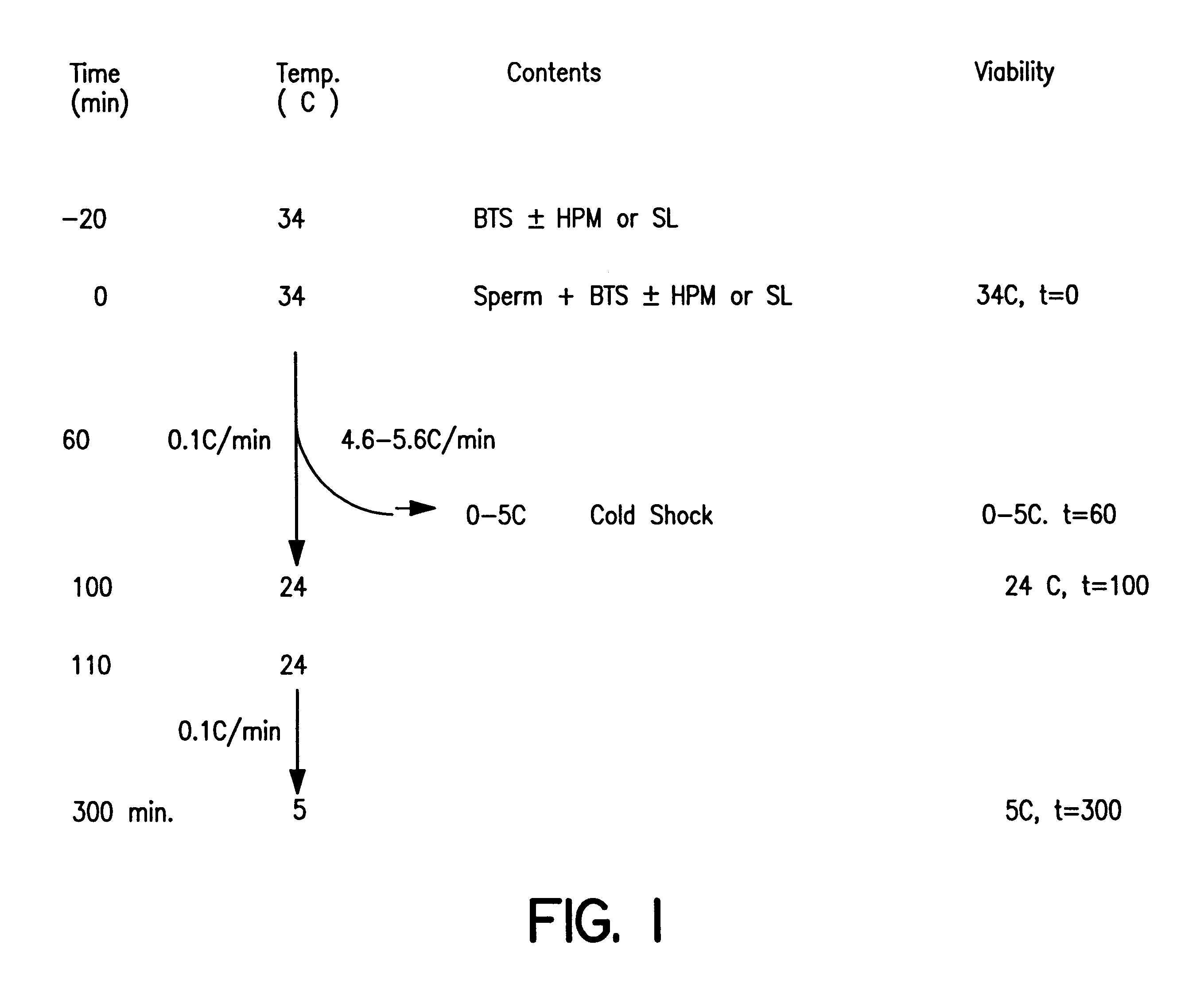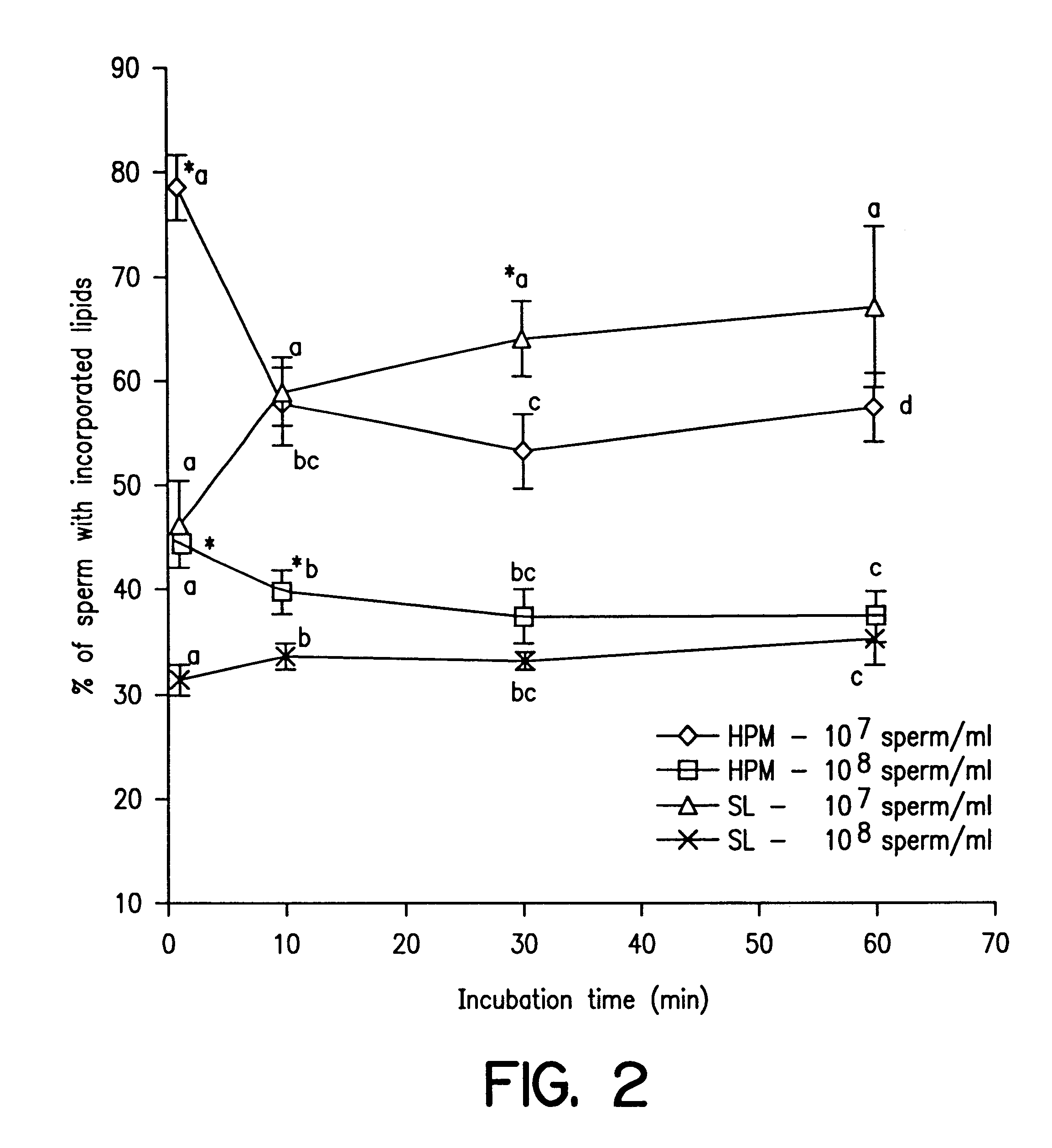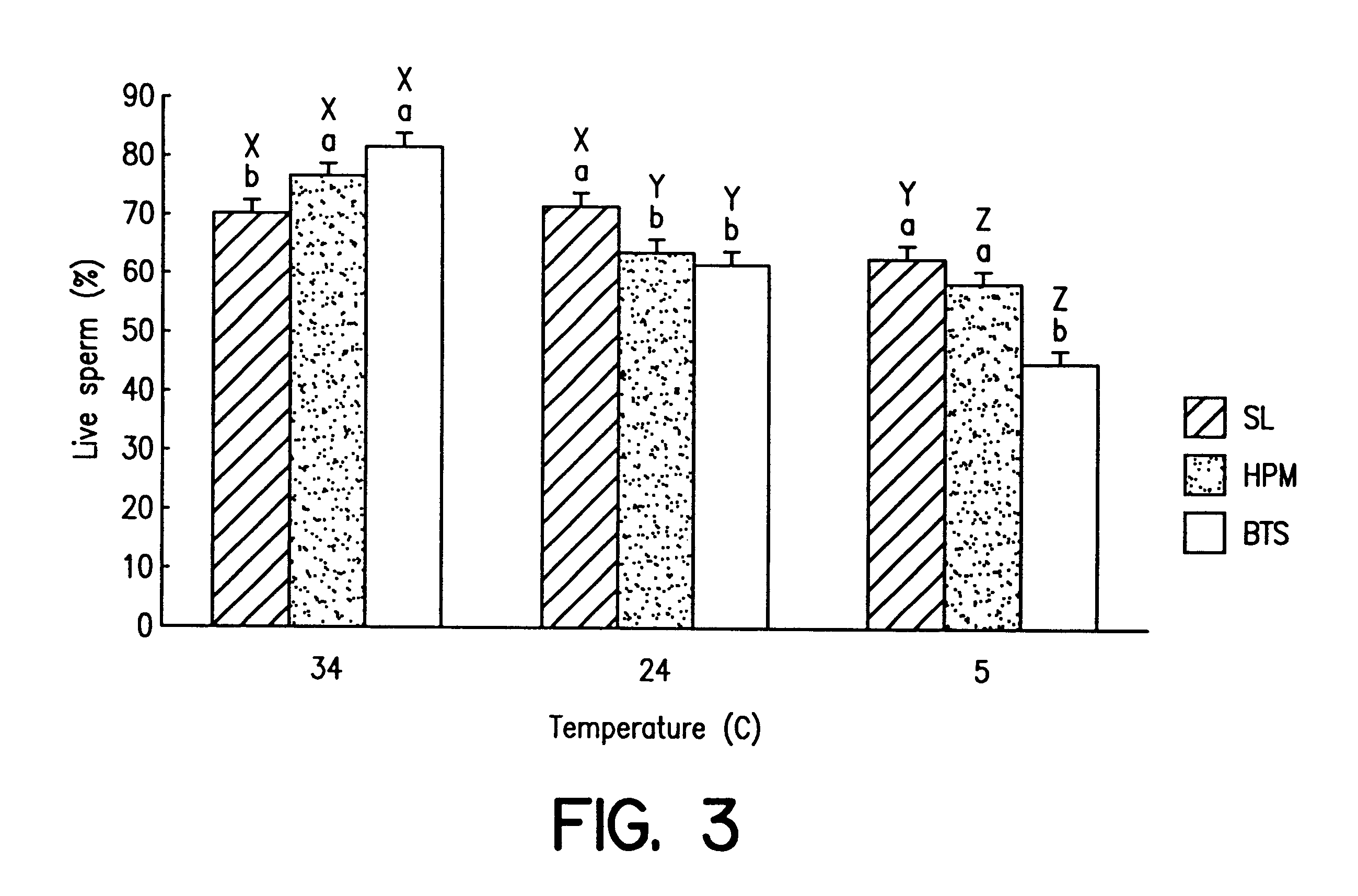Reduction of sperm sensitivity to chilling
a technology of chilling and sperm, which is applied in the field of chilling sensitivity reduction, can solve the problems of poor performance, reduced survival rate, freezing and thawing damage to cell membranes,
- Summary
- Abstract
- Description
- Claims
- Application Information
AI Technical Summary
Problems solved by technology
Method used
Image
Examples
example 1
We adjusted the SL concentration to obtain a maximal post thaw result. We examined the SL effect on acrosome membrane integrity and fertilizing ability, besides the sperm viability and motility. We adjusted the composition of SL with consideration of including cholesterol and lipoprotein in liposome.
To investigate the ability of treated boar sperm to fertilize we have or plan to observe:
1) The ability of sperm to capacitate and acrosome react based on the CTC stain.
2) The ability of sperm to fertilize in vitro
3) The ability of sperm to fertilize in vivo
In all three experiments, we utilised untreated sperm, sperm treated with HPM lipids, and sperm treated with SL lipids (as detailed above).
To alter SL composition, we sequentially altered the relative amounts of the various lipids in the SL liposomes and evaluate sperm viability during cooling and cryopreservation:
1) Altered the relative proportions of the phospholipids in SL, while maintaining the fatty acid co...
example 2
Preservation of Bull Sperm
Lipid / CM solutions were mixed in the exact proportions described previously for boar sperm; dried under N.sub.2 and then in a vacuum dessicator for 30 min and then rehydrated with 60 C. CSN / tris buffer (pH 7.3) and vortexed (3.times.20") to dissolve the lipid films which were on the wall of the container (1.5.times.15 cm screw-capped tubes). The lipid concentration in the buffer was 0.693 .mu.mol / ml.
In a preliminary trial with semen from 4 bulls, semen was prepared, cooled and frozen. A second trial used three bulls, (familiarly named Dynasty, Gypco and Warrior) and semen was treated and frozen at the commercial bull AI company, Gencor. The sperm concentrations for the second trial were 2.162.times.10.sup.9, 1.862.times.10.sup.9 and 1.736.times.10.sup.9 sperm / ml respectively. For both the preliminary and second trial, semen was kept at 35.degree. C. The concentrations were adjusted to 2.times.10.sup.9 sperm / ml by centrifugation (500.times.g, 10 min, 35.degr...
PUM
| Property | Measurement | Unit |
|---|---|---|
| temperature | aaaaa | aaaaa |
| temperature | aaaaa | aaaaa |
| concentration | aaaaa | aaaaa |
Abstract
Description
Claims
Application Information
 Login to View More
Login to View More - R&D
- Intellectual Property
- Life Sciences
- Materials
- Tech Scout
- Unparalleled Data Quality
- Higher Quality Content
- 60% Fewer Hallucinations
Browse by: Latest US Patents, China's latest patents, Technical Efficacy Thesaurus, Application Domain, Technology Topic, Popular Technical Reports.
© 2025 PatSnap. All rights reserved.Legal|Privacy policy|Modern Slavery Act Transparency Statement|Sitemap|About US| Contact US: help@patsnap.com



